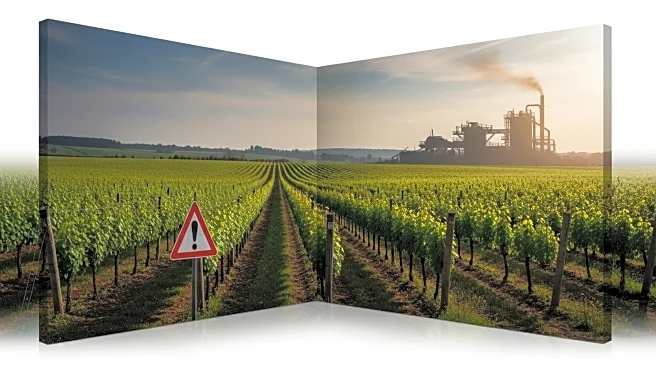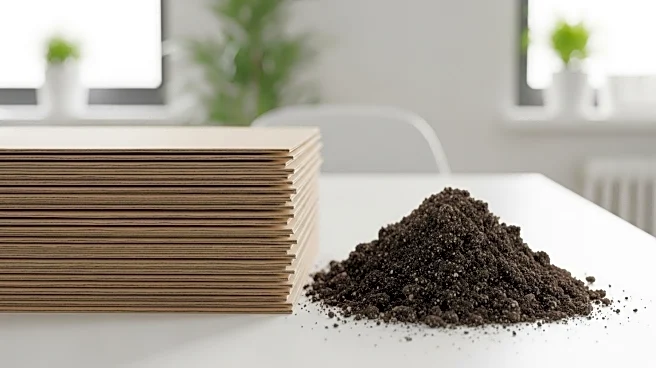What is the story about?
What's Happening?
Engineers in Australia have created a new building material known as cardboard-confined rammed earth, which significantly reduces the carbon footprint compared to traditional concrete. This innovative material is composed of cardboard, water, and soil, making it both reusable and recyclable. The development aims to address the environmental impact of construction, as cement and concrete production contribute to approximately 8% of global emissions. The material can be produced on-site, reducing transport costs and simplifying logistics. It is particularly suitable for construction in remote areas with abundant red soils, ideal for rammed earth construction.
Why It's Important?
The introduction of cardboard-confined rammed earth represents a significant advancement towards sustainable construction practices. By reducing reliance on cement, this material offers a lower carbon footprint and cost compared to concrete, aligning with global net zero goals. It provides a practical solution for building in remote areas, potentially transforming construction logistics and reducing emissions. The material's high thermal mass naturally regulates indoor temperatures, decreasing the need for mechanical cooling and further cutting carbon emissions. This innovation could lead to widespread adoption in the construction industry, promoting environmental sustainability.
What's Next?
The research team at RMIT University is ready to collaborate with various industries to further develop and implement this new material. The potential for widespread use in construction projects, especially in regions with suitable soil conditions, could lead to significant changes in building practices. As the material gains traction, it may inspire further innovations in sustainable construction, encouraging the industry to explore more eco-friendly alternatives. The ongoing development and partnerships could accelerate the transition to greener building methods, contributing to global efforts to reduce carbon emissions.
Beyond the Headlines
The development of cardboard-confined rammed earth highlights the growing interest in earth-based construction methods, which have historical significance and modern relevance. This approach not only addresses environmental concerns but also taps into cultural and ethical dimensions of sustainable living. The material's ability to be sourced locally and its recyclability reflect a shift towards more responsible resource management in construction. As the industry embraces these changes, it may lead to broader societal shifts in how buildings are designed and constructed, prioritizing sustainability and community engagement.
AI Generated Content
Do you find this article useful?














